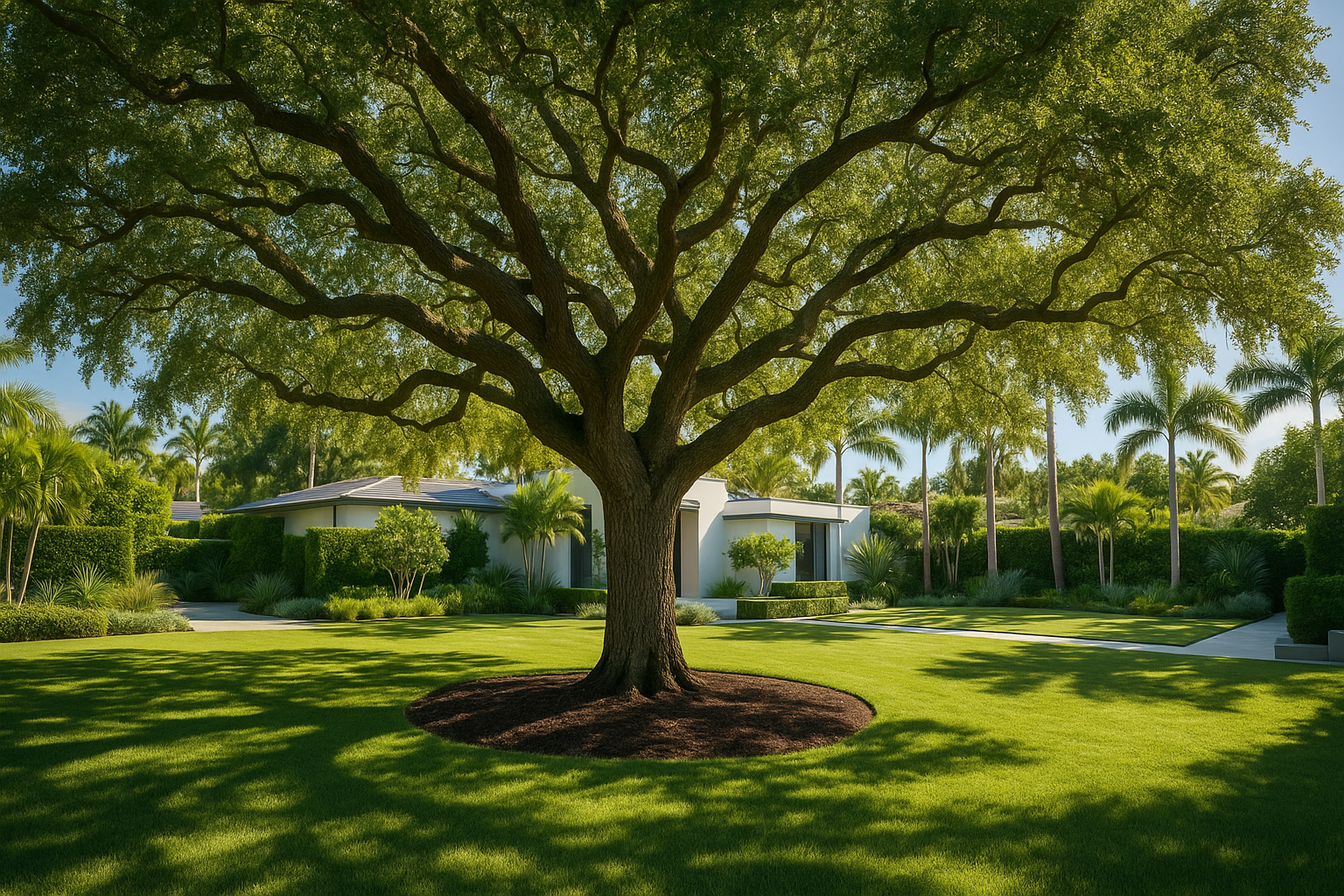
A practical, deep-dive guide on caring for live oaks in luxury South Florida landscapes, from disease prevention to optimal watering.
Preventing Disease and Damage in Live Oak Trees
Live oaks are a signature feature of many luxury South Florida estates and bring timeless beauty and shade to residential landscapes. However, their grandeur is best preserved through proactive disease prevention and damage control. Common threats include fungal infections, improper pruning that leads to structural weaknesses, and root disturbance from landscape renovations. Even in upscale yards, mature trees can suffer from neglect if homeowners or their landscape teams overlook routine inspections. Regular, professional assessment of canopy density, visible wounds, and leaf color is essential for early intervention. Pruning live oaks outside of active growing seasons lowers the risk of disease transmission, particularly oak wilt. Special care should be given to preventing soil compaction and avoiding heavy equipment near root zones, which can damage fine feeder roots necessary for nutrient uptake. For more about comprehensive oak care, consult the guidelines provided by educational and government agencies, such as Maintaining Oak Tree Health.
Best Practices for Watering, Mulching, and Pruning
Key elements of everyday care for live oaks include deep, regular watering during extended dry spells, but with care not to flood the soil or expose roots to chronic wetness. Mulching should be done conservatively: apply high-quality natural mulch in a broad ring around the tree but keep it several inches away from direct contact with the trunk, as piled mulch can trap moisture and lead to rot. When pruning becomes necessary, do so in winter or during periods of dormancy, using clean tools to avoid introducing pathogens. Removing dead, damaged, or crossing branches improves airflow and light penetration within the canopy, further supporting tree health. Disease management also includes prompt removal of infected limbs, application of recommended fungicides when warranted, and regular monitoring for insect pests. For municipal and protected specimen trees, always verify local regulations regarding pruning and removal before any significant work. Professional arborists follow region-specific standards, so it pays to consult experts familiar with South Florida's climate and legal requirements. For a sample care calendar and credible tips, visit Oak Pruning and Care Best Practices.
Expert Resources for Long-Term Oak Health
The long-term health of live oaks depends on a combination of science-backed practices and periodic consultation with ISA-certified arborists. Regular risk assessments allow for early detection of potential hazards, such as codominant trunks, decay pockets, and root zone disturbances caused by construction. In luxury landscapes, integrating oaks into a holistic landscape plan ensures that irrigation, lighting, and planting beds do not inadvertently harm established trees. Educational institutions and local governments, such as Oakland, FL, provide actionable advice about low-water usage, preferred soil amendments, and the avoided use of high-nitrogen fertilizers. For further reading or to work with local experts, consider resources at Official Oak Tree Care. Finally, as South Florida faces changing weather patterns, resilient management—reinforcing root zones, choosing companion plants wisely, and monitoring for emerging diseases—will keep live oaks thriving for generations.
.webp?width=200&height=55&name=Logo%20horizontal%2070-2%20(1).webp)